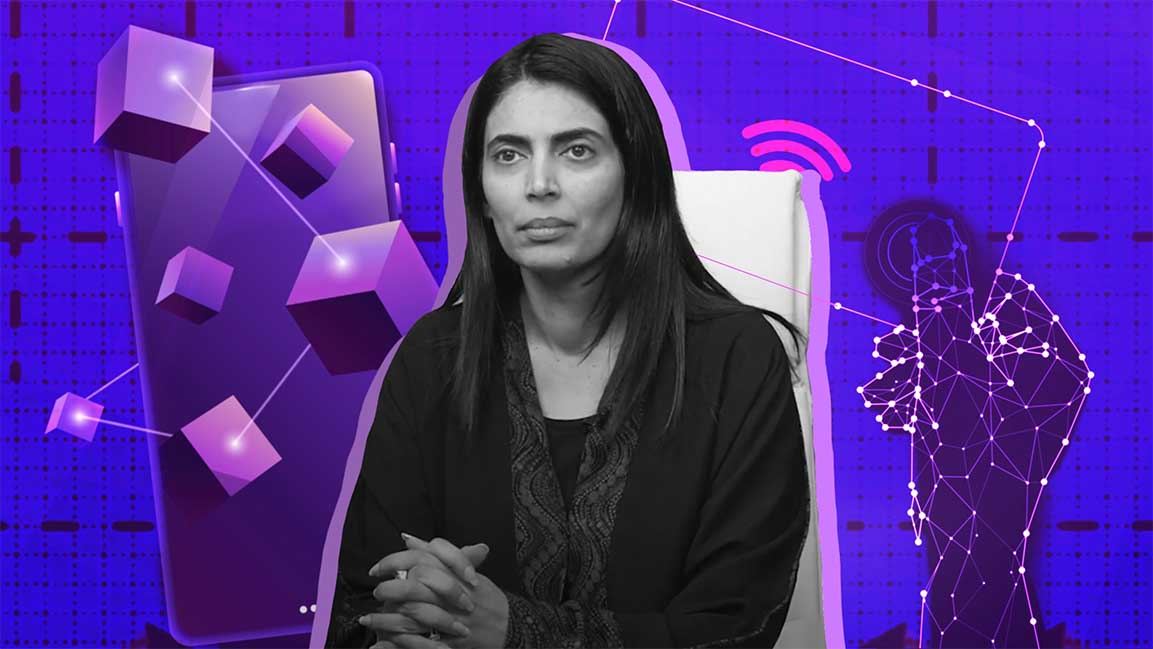- | 9:00 am
The future of money is this—whether we like it or not
Dr. Saeeda Jaffar, Senior Vice President & Group Country Manager at GCC - Visa, shares insights on how crypto, AI and open banking will shape the future of money.

What’s next for the global economy? Where is experiential commerce heading to? How will it transform the way we work, play and shop? What’s the future of money?
For payment gateway Visa, the Qatar World Cup 2022 was a definitive moment, indicating trends that will steer the future of money. “It’s digital, digital, digital,” says Dr. Saeeda Jaffar, Senior Vice President & Group Country Manager at GCC – Visa, who explains how nine out of ten payments during the World Cup were contactless.
Apart from BNPL and fintech solutions, there are other trends shaping the future of money in the Middle East, she says. “We see four different groups under digital assets playing a big role in the future – Central Bank Digital Currencies (CBDC), stablecoins, crypto, digital assets such as NFTs, and embedded finance.”
“We are extremely bullish about the first two. These will play a vital role in shaping and using digital assets, digital currencies, everyday money, and modern payments,” she adds.
She believes that even open banking and real-time payments will unravel new trends in the region as it becomes more prevalent.
WATCH THE VIDEO HERE
AI FOR SMARTER, SUPERIOR, AND FASTER EVERYTHING
Meantime, AI and machine learning are radically transforming how the business operates, driving continuous innovation in finance.
While there are many payment technologies, Dr. Jaffar says it’s essential to keep a pulse on how AI is embedded into them.
Citing an example of how AI is used in a Visa product for risk monitoring and checking if a transaction is legitimate, she says, “the potential of AI is vast and goes beyond the scope of money.”
“The insights that AI and big data give us are tremendous. For example, we process 350 billion transactions and take 100-200 different attributes from those transactions. Imagine multiplying those, and we’re able to identify and sift through an authentic transaction,” she adds.
While routine tasks are being automated, deep learning and AI can transform payments and much more.
ECONOMIC INCLUSION
“In 2020, Visa made a public commitment to work with 50 million SMEs worldwide and bring them into the financial fold. We believe economies that include everyone, uplift everyone,” she says.
Today, Visa has brought nearly 30 million SMEs and MSMEs into the fold and aims to add 20 million more this year.
“It is essential to leverage technology to provide solutions to SMEs so they can take advantage of the tech innovations we offer them.”
Visa introduced several initiatives, including She’s Next, which gives women entrepreneurs across MENA mentoring, funding, and access to an extensive network to help them take their businesses to the next level.
Citing Visa’s Practical Money Skills initiative, a program to help its SME partners manage their money, Dr. Jaffar says financial inclusion is “at the top of mind for all of us.”
INCLUSION AND DIVERSITY
Inclusivity and diversity within the organization are equally important, she says. “This is a journey. It’s something that we all work towards day in and day out. It comes from the fundamental realization that we are all a product of our environment.
The world today is far more complex and complicated than it used to be a decade ago, and as the future looks more challenging, she adds we need “the strongest and the most well-rounded teams” to address those problems “because if you don’t, we will be victims to our blind spots.”
“It is extremely critical that we keep going on this journey, and every day ask ourselves, can we do more? Are we doing enough?”






































